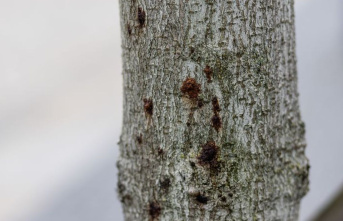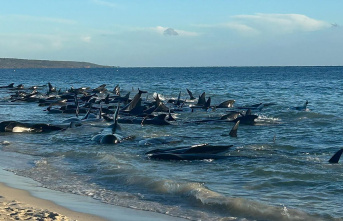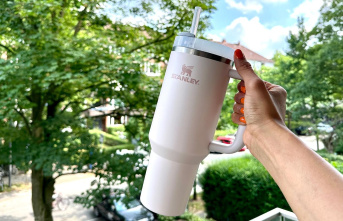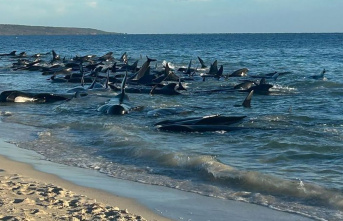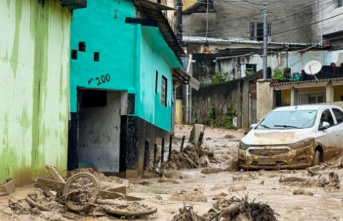Where houses once stood there is now a crater. Undertaker René Stawinski is standing at the edge of the abyss where excavators are working on six heaps of rubble. Six skyscrapers stood at this point in southern Turkey's Kahramanmaras. They collapsed, almost crumbled. The floor is littered with pebble-sized rubble. A white cloth with red flowers lies on the ground, the air is full of dust. A sweet smell wafts from the rubble. That's what death smells like.
Two weeks after the earthquake, there is little hope of finding anyone alive here. Stawinski came for those who died in the rubble. The 48-year-old from Saxony-Anhalt leads a team of twelve undertakers from Germany. Deathcare is the name of their voluntary organization based in Wörth, Rhineland-Palatinate. She helps recover bodies and prepares them for burial.
The Turkish authorities suspect two more dead under the rubble heaps in front of Stawinski. If they are found, they should first be officially identified. Then Stawinski and his team should disinfect the corpses and prepare them for burial. Afterwards, relatives can take them away and bury them. In a catastrophe there is often no time for the usual ritual washing.
Tens of thousands have already been buried since the devastating February 6 earthquake in southern Turkey. Thousands of dead are believed to be under the rubble. The undertakers around Stawinski have replaced a first team from Deathcare. In order to recover the dead, the helpers depend on information from relatives or authorities. The quickest possible recovery is also required for hygienic reasons. Despite the cold, the decomposition of the corpses has already begun, says Stawinski. It is advisable to bury them quickly, also because there is a risk of epidemics.
"The relatives want to mourn"
Sometimes the undertakers hope to find someone alive. A dog struck a few days ago, says Stawinski. The thermal imaging camera indicated a heat source. In the end, however, one deceased was recovered. The devices displayed the residual heat for some time after the death of a person, explains Stawinski.
For the relatives, it's all about grief and graduation. "The dead have relatives and the relatives want to mourn," says Stawinski. The volunteer team has a translator with them. All are trained in bereavement counseling.
Kahramanmaras was close to the epicenter of the quake. According to the city ministry, more than 22,000 buildings have collapsed or been badly damaged here alone. The city has emptied, a number of people are housed in emergency shelters. Those who are still sitting here in front of the heaps of rubble want to take relatives with them and bury them. Her eyes are red, blank.
They are grateful to the helpers, and this is evident again and again. A man offers the team from Germany sweet dates. Another turns around and says in German: "Thank you." The humanity among the people and the gratitude that touched him, says Stawinski. It may not be possible to save any more survivors, but "just hug or hug the relatives to show that you are with them".


